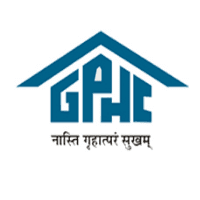It is 5 O'clock on a cold February morning. Wing commander K. S. Suresh steps into a staff car that will take him to an air base of India's western sector. The black car passes through barrack type houses and stops at an Air Force security gate. A uniformed guard recognizes Suresh and salutes him smartly. Behind the gate stand MiG of IAF squadrons, each under a different commander. K. S. Suresh, called as Kukee, commands 321 squadron.
At 5.20 am Kukee is in a flight planning room. There are maps and identification charts on the walls. Today's order for Kukee is: an air strike at Batala, Punjab, at 7.00 am. He will lead a two plane formation against "enemy" 17th Armored Brigade of a hostile country.
This mission is assigned by Command Headquarters. Wartime conditions are practised as actually as possible. On this day Kukee is too busy to worry about the risks. He calls the Meteorological officer to get the weather report: thick clouds at 550 meters, visibility 5 kilometers, a haze at 400 meters, west wind at 15 kph, and slight air disturbance. Now marker pens, rulers, protractors and compasses are waiting for him on a long wooden table. Kukee takes out a map from the shelf and chalks out the path and speed of the plane. In one hour the mission is planned. Then he goes to another room and discusses the target with an army officer. Squadron leader "Bundle" Tyagi is present there. He is Kukee's wingman on this trip. During these exercises, rank means nothing.
Only twenty minutes are left before engine starting time. Kukee grabs helmet, oxygen mask and head set, and walks to the servicing station. There he examines forms certifying that every part in the plane has been checked. Then he walks around the plane to check for leaks, loose panels and pins. There are none, so he climbs into his seat, connects his oxygen supply and radio. Next he pulls out a safety pin from the seat, and then becomes 'Live'. If he pulls the cord, the seat with a parachute will rocket 200 meters out of the aircraft in less than a second. Finally, the last compulsory check before take off. It is called TAFFLOHP trim, air pressure, air brakes, ailerons, flaps, fuel instruments, oxygen, hydraulics and pneumatics.
single seater fighter plane. Take off permission received, the two pilots accelerate the runway. Their wing tips are just some centimetres apart. They lift off at 360 kph and soon climb up and get 950 kph. It is 6.45 am, 15 minutes before their time on Target.
At 6.55 am they reach their first check point a village named Mirthal down on the earth. Kukee begins to time his target. As they rise up to 450 meters Tyagi's plane rocks violently due to air bumps. "A bit bumpy here," says Tyagi on radio. "Breakfast may come up before the bomb goes down," Kukee Jokes. Two Hunters appear far to the right as "enemy" planes. They turn away and vanish.
There are clouds all around. The earth has disappeared too. The MiGs are fast approaching the target. Now both the planes dive below the clouds, their planes are flying lower. Kukee sees the target, an "enemy" tank and he releases the bomb.
This is a perfect opportunity to rehearse attack procedures and bomb aiming. At the time of firing automatic camera captures the action. The two planes circle, then come down on another target, a bridge. There is a strong wind therefore they releases the bombs earlier, but with accurate
calculation. "We have got it right," they say. Visibility has become worse. "Let's go home," says Kukee. Back at the base, they report to the army man. He admires them." Commanders, your planes were in the right place at the right time. You have given effective support to the Army."
Like every Indian fighter pilot Kukee Suresh does several hundred hours of flying in a year. Generally, two daytime flights and one night sortie. This means that more than half of his working hours are devoted to flying, mission planning and reporting. For the rest of time, 41 year old Kukee is an attack instructor, an air combat leader and a teacher of accurate weapon delivery techniques. He also sees that all the pilots in his squadron maintain this proficiency. Every few years, a pilot is 'rested" for a year or two at a desk job.
The Wing commander of 321 squadron K. S. Suresh is proud of IAF; so is IAF. (by Paul Watched in Readers Digest -75 years selection of articles)
Now he begins to taxi. On the runway, wingman Tyagi joins him in another MiG 21, which is a












